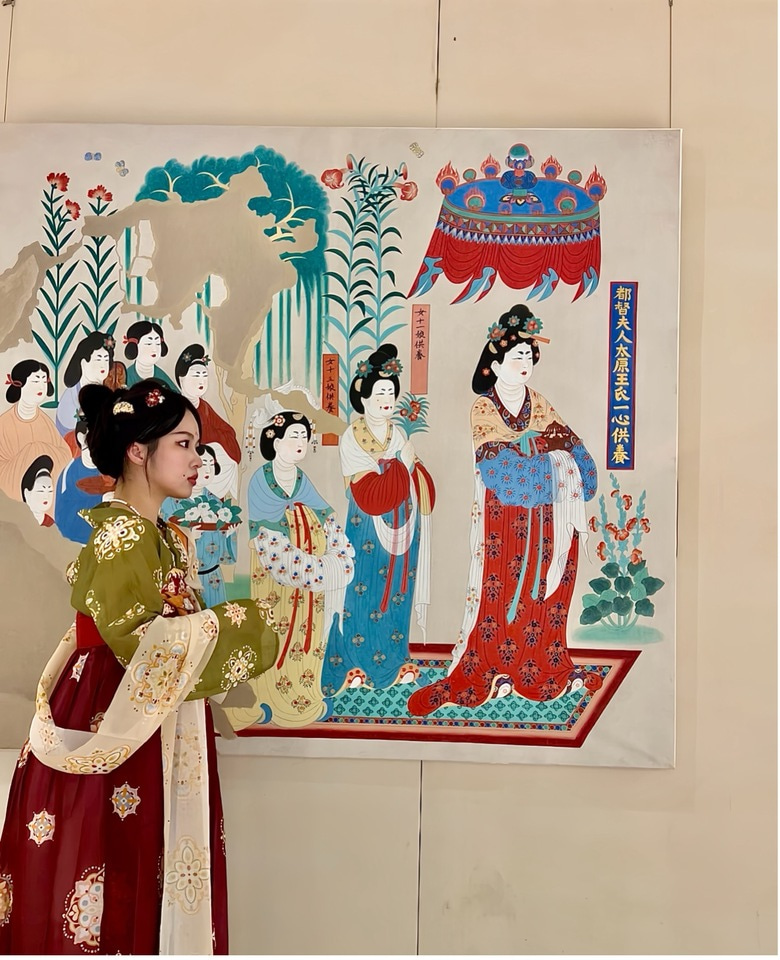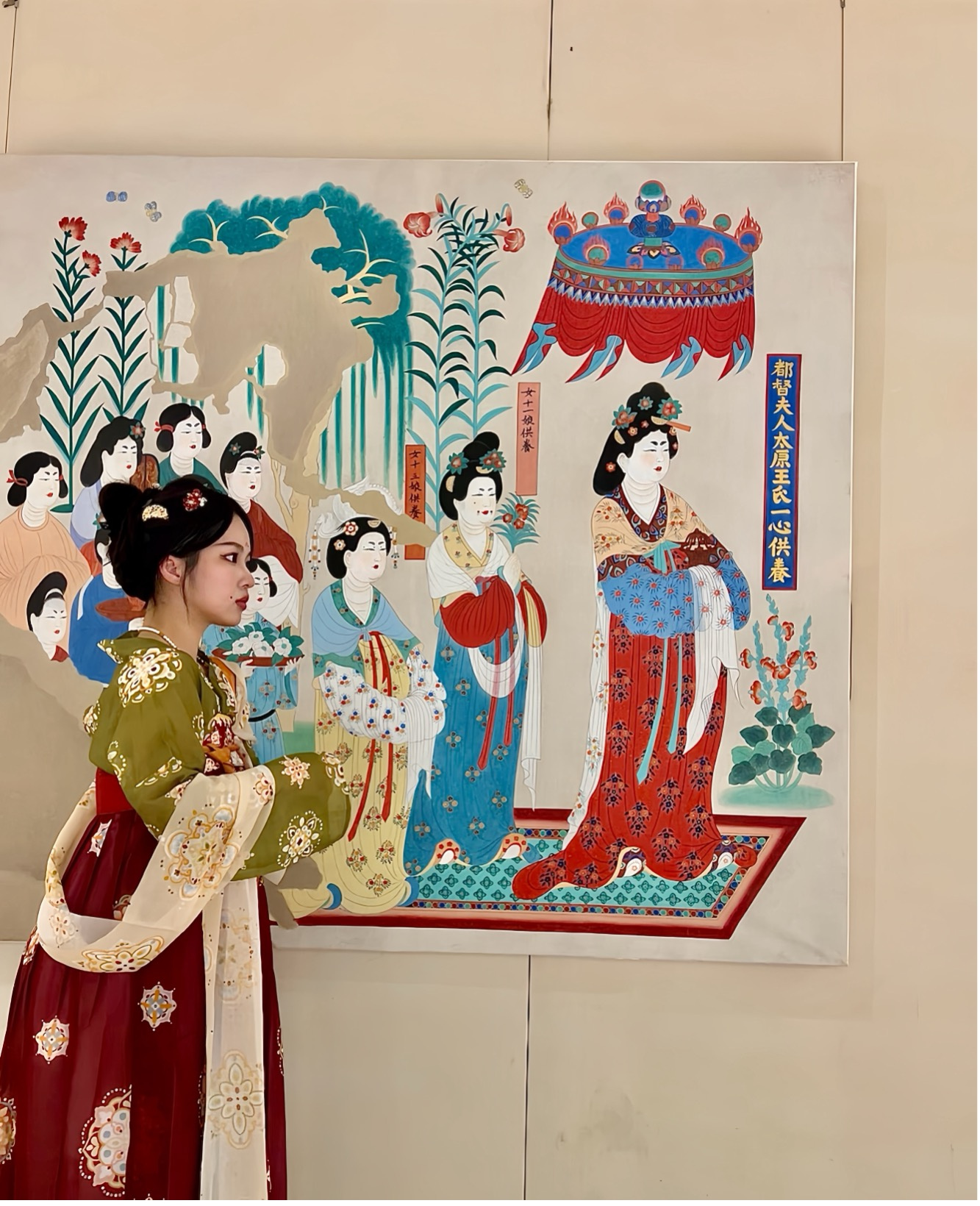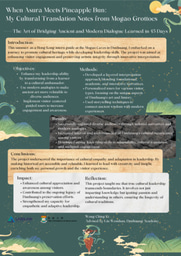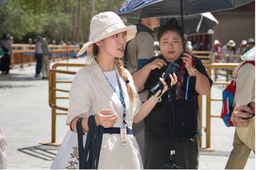【LiA】Week 4: From Professional to Engaging—How to Make Visitors Fall in Love with Dunhuang?

This week’s greatest breakthrough was understanding the wisdom behind Dunhuang’s cross-disciplinary blending. During the tour of Cave 249, I specifically pointed out the astonishing scene on the cave ceiling—the Hindu war god and the Chinese thunder god “pairing up” in the same scene, exemplifying ancient cultural mashups at their best! The image of the Apsaras also made me rethink their role: they are not just celestial beings but “all-rounders,” tasked with both scattering flowers and playing music, as well as moonlighting as construction workers" supporting the cave ceiling (laughs).
When a visitor asked, “Are the flying Apsaras angels?” my off-the-cuff response, “They are the Buddhist vibe team,” sparked laughter. This unexpected moment made me realize: “Cultural transmission must be ‘translated’ into modern language.” Later, I developed a three-tier explanation method:
- Foundational layer: objective data (e.g., “This statue is 4.2 meters tall”)
- Academic layer: Source analysis (e.g., “Tang Dynasty music and dance was influenced by Kucha music and dance”)
- Interactive layer: Modern analogies (e.g., “The expression of the little demon struggling under the Heavenly King's feet = me on Monday morning”)

In terms of heritage conservation, I learned important lessons:
- The “red lips and white face” style from Qing Dynasty restoration, though well-intentioned, is now regarded as an “aesthetic disaster.”
- Modern restoration principles emphasize “restoring as originally,” even leaving oxidized blackened red lead (aka Minium, a bright orange red pigment) untouched.
- As the teacher said, “The beauty of the Mogao Caves lies in its willingness to display every wrinkle.”
This made me realize that true preservation is not about renovation, but about respecting the traces of time. Like those anonymous painters who mastered “perspective” 700 years before the Renaissance yet left no names behind, perfectly embodying the realm of “Apparent nothingness, yet real substance (有若無,實若虛).”

〈Oxidized Apsara〉
This week's reflections:
- Information density must adhere to cognitive load theory
- Analogies must uphold academic integrity
- Layered communication is a core leadership skill


〈Our “Feng Shui treasure land”:Cave 130〉


〈The Mogao Grottoes Murals in the Art Museum〉





Please sign in
If you are a registered user on Laidlaw Scholars Network, please sign in